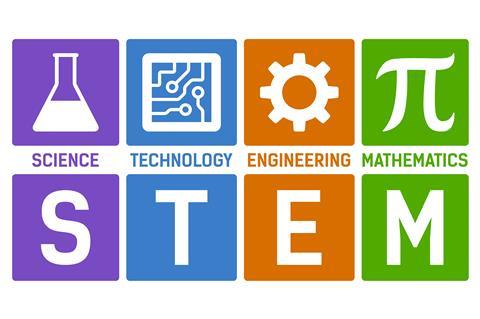But recruiting teachers could be a big barrier to ambitious plans to get more students studying sciences and engineering on a short timescale

The Irish government has launched a plan to reform science, technology, engineering and maths (STEM) education across the primary and secondary landscape. The government aims to make Ireland a European leader in STEM education and training by 2026.
In a policy document launched in November 2017 [pdf], Richard Bruton, minister at the department for education and skills (DES), acknowledges the technological revolution changing society and states: ‘If Ireland is to be at the forefront of this transformation, we must be a leader in nurturing, developing and deploying STEM talent.’
The government wants to see an increase of 20% in the total number of secondary students, and a 40% increase in the number of women, taking chemistry, physics, technology and engineering subjects at Leaving Certificate, the final exams in the secondary system. In 2017, only 16% of the total cohort of 58,543 students studied chemistry at this level.
The plan of action
Underpinning these goals is a three-phase implementation plan [pdf]. Phase one, between now and 2019, will focus on what needs to be done to provide quality STEM education. This will be followed by phase two, 2020–22, a time to embed new practice, and phase three, 2023–26, which is for reviewing actions.
Within phase one, the government aims to increase student participation in STEM and awareness of STEM careers. Other objectives are to improve the quality and supply of initial teacher training in STEM, and support for STEM education practice. Plans are set out to review curricula and assessment methods and encourage evidence-led innovation, which will involve a new model to help the STEM education research community have impact on government policy. High on the priority list are reform of the primary maths curriculum and the introduction of computer science at Leaving Certificate.
In 2018, the plan expects the DES to commission audits and research to understand the challenges and opportunities for increasing participation – research on, for example, the uptake of STEM subjects by learners of all backgrounds, abilities and gender.
Meanwhile, the government will trial a more rigorous model for assessing practical work for Leaving Certificate biology, chemistry and physics. Currently, students record experiments in lab books, and there is only a small chance the examining board inspects their books. In their final exams, students face questions on experiments, but answers can be rote learnt from textbooks. The National Council for Curriculum and Assessment (NCCA) in Ireland recommends a 90-minute externally assessed practical exam worth 30% of the overall marks for each of the sciences.
Big barriers, short timescale
Joseph Roche, assistant professor of science education at Trinity College Dublin, welcomes the policy document as indication the government is serious about STEM education. But he worries the implementation plan does not address the main barriers to achieving its ambitious targets in a relatively short timescale.
‘Unless we find ways to attract what is a chronic shortage of chemistry and physics graduates into teaching and make the profession more appealing to them, then it is hard to see how we will increase participation in STEM among students.’ Joseph also thinks the government needs to find a way for at least one lab technician per school, and for science to be recognised as a core subject at Junior Certificate level (equivalent to GCSE-level in Northern Ireland and England). ‘Hopefully the government will back up its plan with specifics and the appropriate level of funding to support teachers in Ireland.’









No comments yet